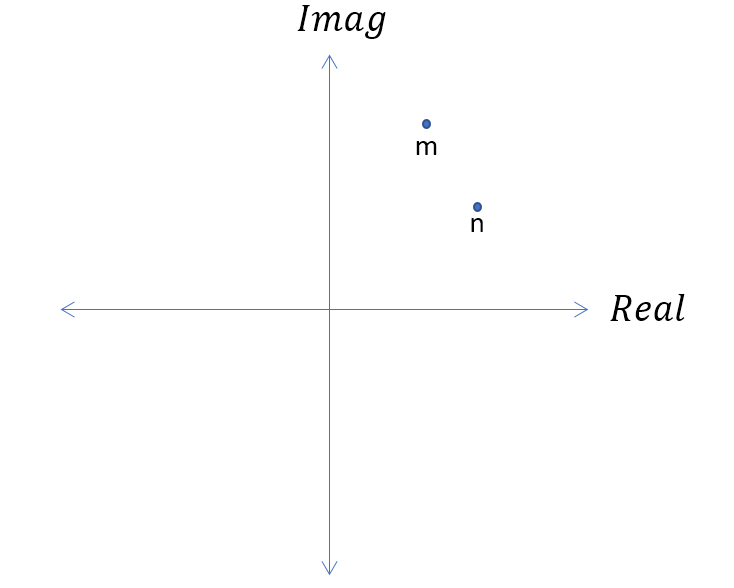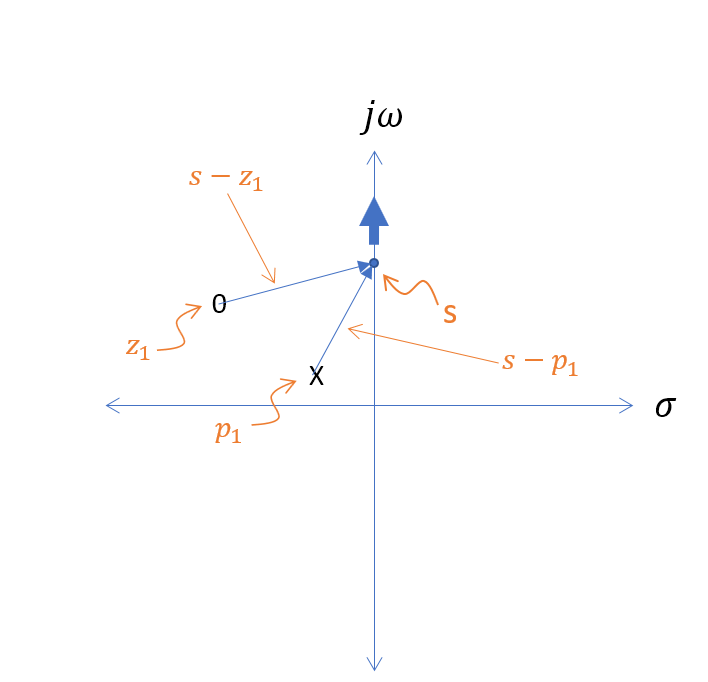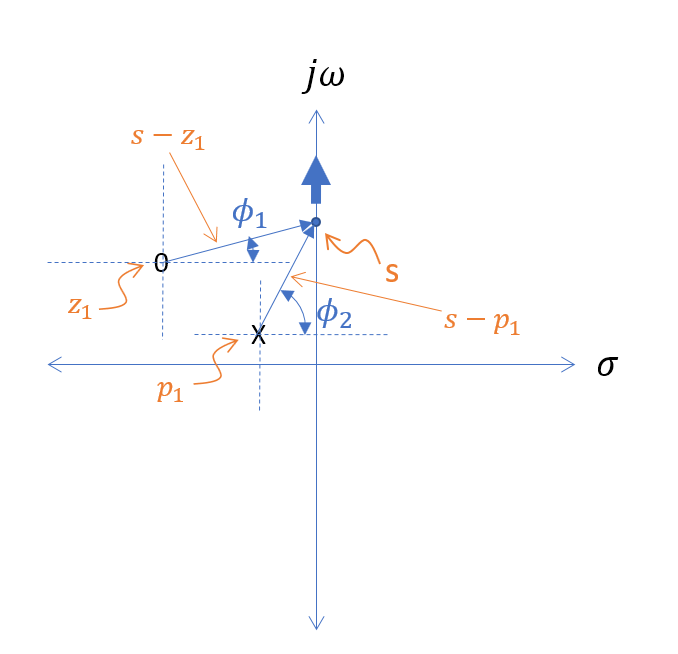This is easier to see graphically, on an s-plane, knowing that the phase is from the frequency response of the system and the frequency response is determined when we restrict s to be the $j\omega$ axis.
Consider the simple ratio of a single pole and a single zero expressed as
$$H(s) = \frac{s-z_1}{s-p_1}$$
Given s as any point on the s-plane, and $z_1$ and $z_2$$p_1$ as specific points, we see that the above expression can be viewed as the ratio of two phasors, alternatively expressed as $$H(s) = \frac{A\angle\phi_1}{B\angle\phi_2}$$
To see this clearly, and how it will ultimately answer your question; first consider two arbitrary points on the complex plane, for example m and n, as shown in the graphic below:
The equation $m-n$ is a phasor with a magnitude and phase $K\angle \phi$. By subtracting n from m, we are shifting the origin to be at position n with relation to m. And thus we get a phasor with length K which is the cartesian distance between m and n, and the angle $\phi$ which is the angle of m-n with the origin at position n:
As stated initially, the phase contribution of each pole and zero is given by the frequency response, and the frequency response is given by restricting s to be the $j\omega$ (or imaginary) axis. So as we sweep s along the $j\omega$ axis, each zero in the numerator and each zeropole in the denominator contribute to the magnitude and phase of the overall response. The phase of the numerator will add, and the phase of the denominator will subtract (for example the simple case of 1/j = -j wich is $-\pi/2$ (-90°): As phasors, this expression is magnitude 1 at angle zero divided by magnitude 1 at angle $\pi/2$).
Thus the angle contribution for each pole inand zero is as described in the graphic below, and here we. We see that as s approaches infinity, the angle contribution from the zero will approach +$pi/2$$\pi/2$, and the angle contribution from the pole (given it is in the denominator) will approach -$\pi/2$. So in this case at infinity the resulting angle will be angle 0, and at any given frequency we can solve for the angle analytically by using $s = j\omega$ for frequency $\omega$:
You can apply the above to your specific case, except $0.9e^{j\pi/4}$ is a pole in the right half plane, which would be unstable (will not converge). If you corrected that for a case where both poles are in the left half plane, then each pole will contribute phase as described above and the overall phase response will be the sum of the two. Thus for two poles in the left half plane, the phase will approach -$\pi$ (-180°) as s approaches infinity.




